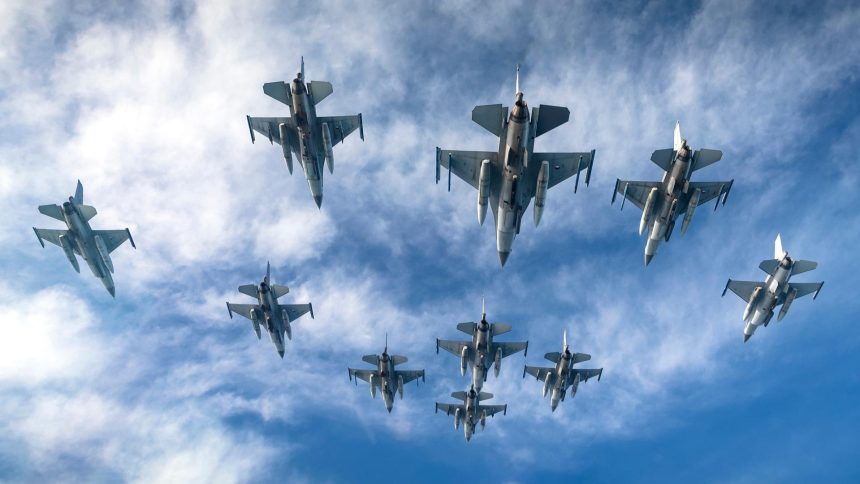The Dutch and Romanian governments signed the formal handover of the Netherland’s last F-16AM/BM Fighting Falcons to the Romanian Air Force for the symbolic price of €1.
The 18 former Dutch F-16s had already been received in the country, flying for the European F-16 Training Center (EFTC) used to train both Romanian and Ukrainian pilots to operate the aircraft for their respective air forces. Until today, these F-16s had stayed under the auspices of the Royal Netherlands Air Force (RNLAF), who agreed to handover these jets two years ago for the above purpose.
Whereas, the Romanian Air Force (RoAF) elected to supply the Baza 86 Aeriana Fetesti air base along with further host nation support. They have been supported by Lockheed Martin, supplying both aircraft maintainers and training staff for the new F-16 pilots, whilst Daedalus Aviation Group, Draken International, GFD, ILIAS Solutions, and BGI, LLC all acted as subcontractors.
🎊We signed the official handover of 18 F-16 fighter jets from 🇳🇱 to 🇷🇴, for training of pilots. We cooperate closely in security and defense. We stand together @ the Eastern Flank. We work together in supporting Ukraine. #togetherweareNATO @Defensie @DutchMFA @IonutMosteanu pic.twitter.com/m2KmnFK9Ps
— NL in Romania 🇳🇱🇷🇴 / Amb Willemijn van Haaften (@NLinRomania) November 3, 2025
Dutch Minister for Defence, Ruben Brekelmans, had this to say: “The training center is a textbook example of successful collaboration. We’re working with Romania and Lockheed Martin in a unique way to train Romanian and Ukrainian pilots. It’s wonderful that our former F-16s have been given a valuable new lease on life at the EFTC. The Ukrainian pilots trained here are already making a significant contribution to protecting their country against the horrific Russian airstrikes.”
🇺🇦 Ukrainian F-16 pilot told @United24media how he shot down six Russian missiles in a single combat mission — a first in Ukraine’s air combat history. 💥#UkrainianAirForce #F16 #UkrainianPilots #StandWithUkraine pic.twitter.com/K6BXVDtOWH
— Ukrainian Air Force (@KpsZSU) October 10, 2025
Ukraine received 24 ex-RNLAF F-16s between July 2024 and May 2025, with the pilots trained at the EFTC alongside new Romanian Pilots. These aircraft have seen extensive action since their first arrival, being used for both offensive and defensive operations against the Russian Federation.
In fact, the jets saw operations in Kursk the region, used for the delivery of precision munitions against Russian targets, as well as the shoot down of the Russian Su-35 air superiority fighter, possibly aided by a SAAB 340 airborne early warning and control aircraft.
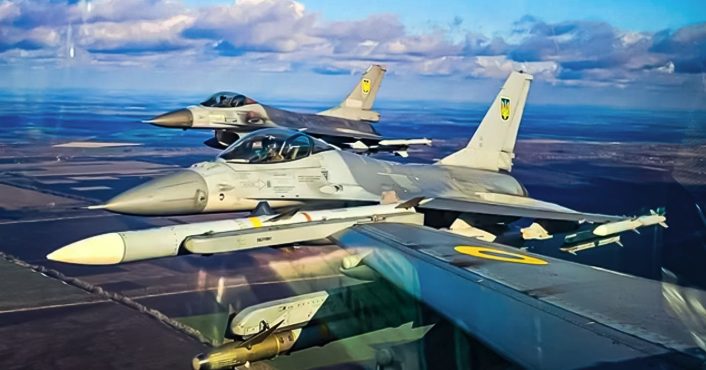
Ukraine continues to train its pilots at the EFTC as more and more F-16s are delivered from its partner nations in Europe and abroad. So far, pledged F-16s to Ukraine include the above 24 from the Netherlands, 30 from Belgium, 19 from Denmark and 14 from Norway, for a total of 87.Norway too has delivered all 14 F-16s to Ukraine, with the rest of its old fleet sold to the RoAF.

The transfer of 18 aircraft to the RoAF is a significant moment, increasing Ukraine’s reliance on its Carpathian partner, whilst also increasing the size of Romania’s total F-16 force. The official transfer documents for these 18 fighters were signed on Nov. 3, 2025, in Bucharest by the Romanian chief of the General Directorate for Armaments, Brigadier General Ion Cornel Plesa, and Linda Ruseler, Director of the Movable Property Domains at the Dutch Ministry of Finance.
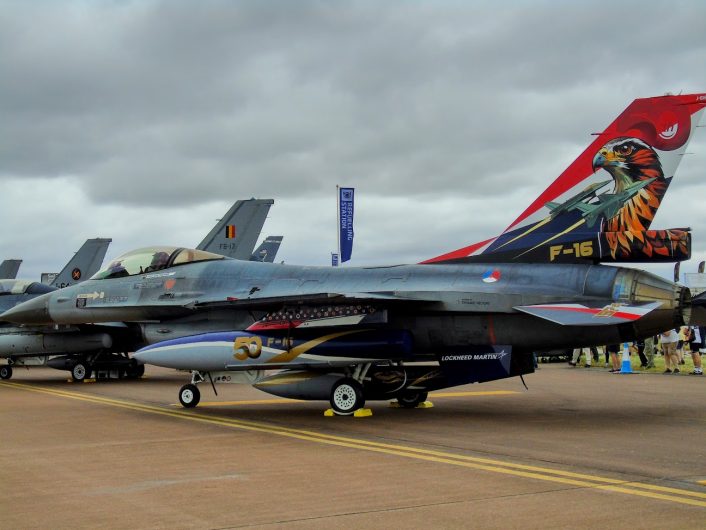
The first RNLAF F-16s, a mixture of single seater AMs and two seater BMs, arrived at Baza 86 on Nov. 7, 2025. Their first duty was to provide a refresher course for F-16 instructors, before they could be used to train the Romanian and Ukrainian pilots for active service. The first pilots graduated from the EFTC in July 2024, allowing for the first deliveries of Ukraine’s new fighter jets.

Carpathian Vipers
The RoAF has focused its modernisation upon the F-16, sourcing fighters from a number of European states including Portugal, Norway and now the Netherlands. The last five years have seen the birth of the Carpathian Viper force and a sudden increase in numbers, mandating the set up of the EFTC to cope with the increase in aircraft and the need for pilots to crew them.
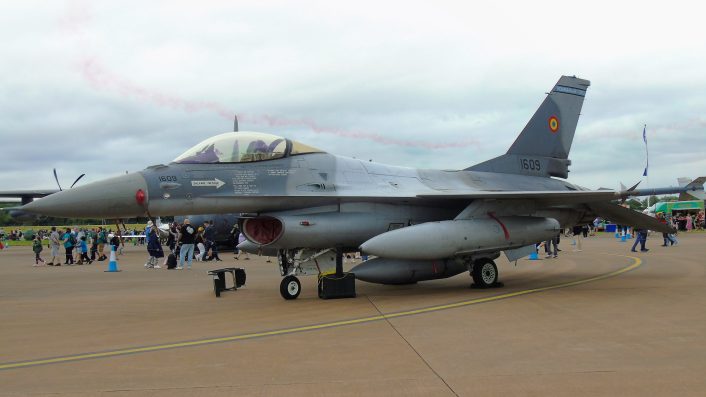
The RoAF first went to Portugal for a total of 12 F-16AM/BMs, nine single seaters and three dual seaters, which were delivered between August 2020 and March 2021 under the Peace Carpathian One programme. These aircraft had interestingly been sold second hand to Portugal from the United States. A second deal, Peace Carpathian Two, was made in January 2020 with Portugal delivering an extra five aircraft to the RoAF.
In December 2021, a third deal was made, this time with the Norwegian government, with a value of €452 million, for the delivery of 32 F-16AM/BM aircraft under the Peace Carpathian Three Programme. These aircraft were delivered between 2023 and 2024, rapidly increasing the size of the RoAF, especially given the retirement of a fleet of Mig-21 ‘LanceR’ fighters which had been in service from the mid 1990s until May 2023.
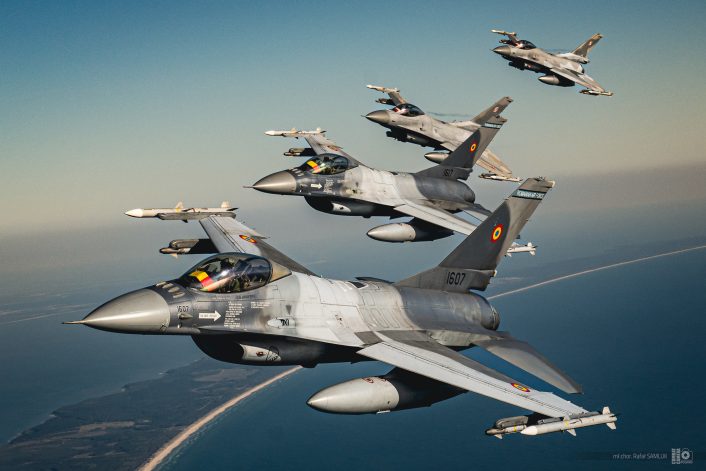
The F-16AMs have so far focused on quick reaction alert (QRA) in Romanian air space, but are starting to shift abroad to take on air policing in the Baltic as a part of their NATO commitments. So far the RoAF have completed deployments to Šiauliai, Lithuania, in March-July 2023 and March-June 2025, flying alongside Portuguese and Polish partners, respectively.
Flying with a mixed load of both AIM-9X and AIM-120 AMRAAM missiles, they intercepted a variety of Russian fighters, including Su-27 Flankers, showing how far the RoAF had come in such a short space of time. The last NATO air policing mission had taken place in 2007 with a number of Mig-21s, but the F-16 allows the RoAF to get back in this game on a level that is at parity with the Russian military.
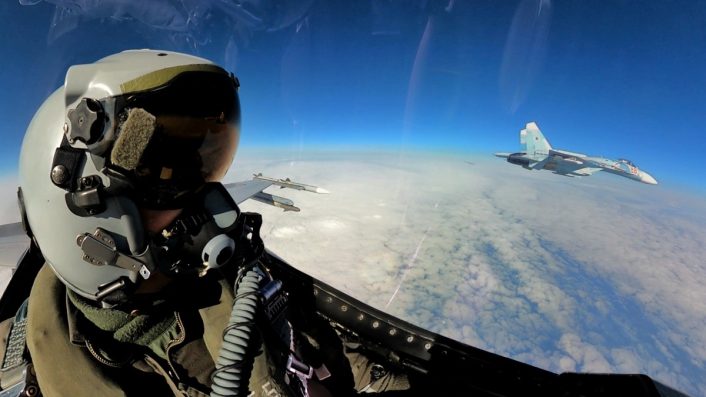
The RoAF initially struggled maintaining QRA at home and NATO air policing abroad, but as the size of the fighter force has increased, this has allowed for more flexibility in deployments. The future of the RoAF looks to be even brighter than hand me down aircraft from western Europe.
On Nov. 21, 2024, the Romanian government confirmed its intent to buy 32 Lockheed Martin F-35A aircraft through a foreign military sale with the US. Romania officially became the 20th F-35 customer, with first deliveries expected in 2031. The purchase was valued at $6.5 billion and includes more than just the aircraft, with logistical support for pilot training, flight simulators, and air-to-air and air-to-ground munitions included in the cost, marking a significant defence investment.
The Romanian Army receives a huge budget in 2024, a budget that exceeds 20 billion € for defense (almost 45% higher than the amounts allocated in 2023).
Below are some ongoing programs (contracted):
• 32 x F-35 Lightning II (worth $6.5 billion);
[1/16] pic.twitter.com/Zh9VC7EYJx
— Dragoș 🇷🇴 (@RomaniaU93389) January 9, 2024
Whether the RoAF will divest some of its F-16s once these aircraft are delivered is speculation but, if all are kept on, it would make Romania a significant player in European air security, rivaling the fighter fleet of Sweden and having more fighters than the Netherlands, Belgium or Norway. Romania is certainly the one to watch in this new age of geopolitical tension.

